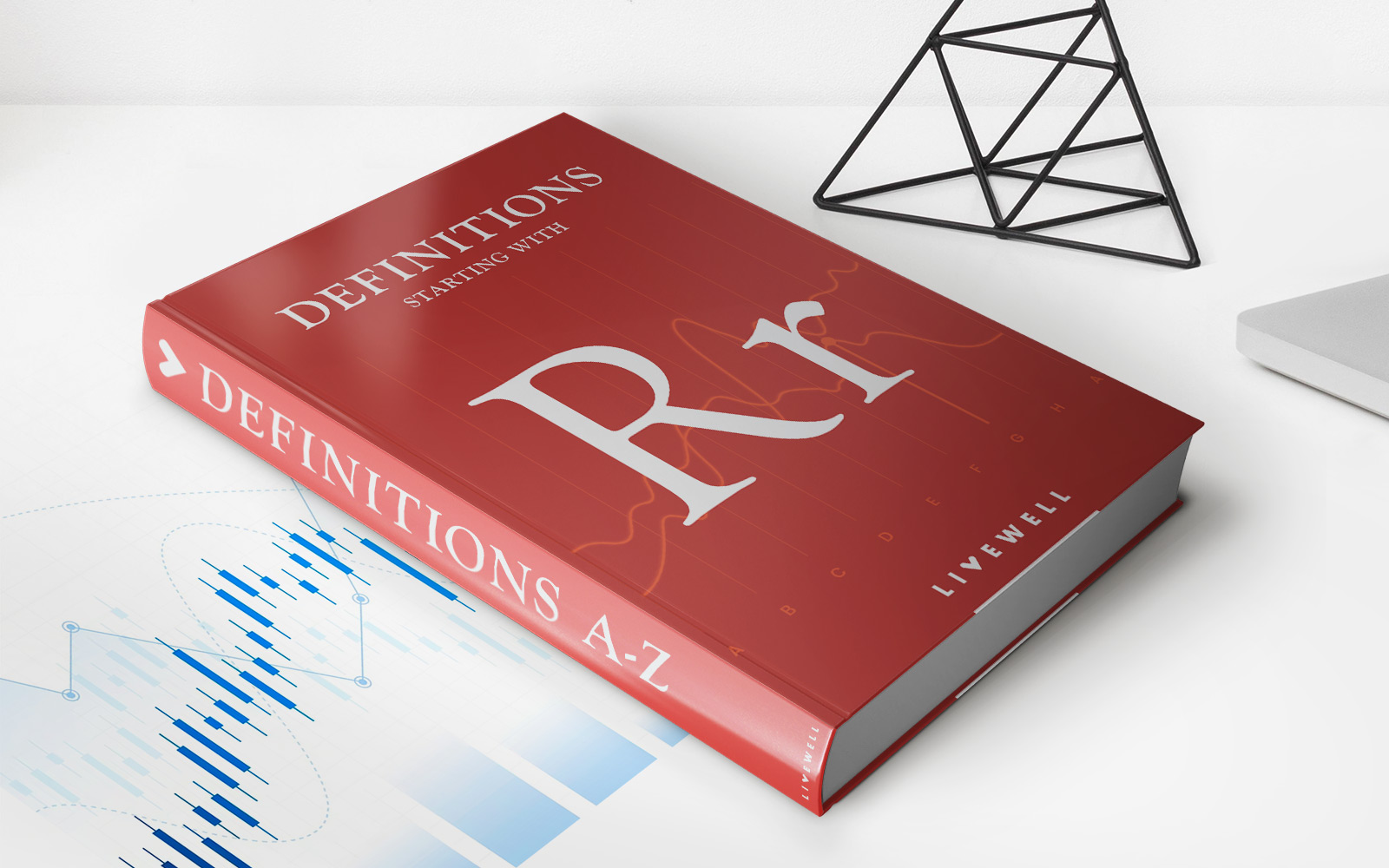

Finance
How Can I Use Life Insurance While Alive?
Published: October 15, 2023
Discover how you can leverage life insurance for your financial needs, even while you're alive. Explore the various ways to use life insurance as a vital component of your personal finance strategy.
(Many of the links in this article redirect to a specific reviewed product. Your purchase of these products through affiliate links helps to generate commission for LiveWell, at no extra cost. Learn more)
Table of Contents
Introduction
Life insurance is often perceived as a financial tool that provides protection for loved ones in the event of an individual’s death. However, many people are unaware that life insurance can also be used while they are still alive to meet a variety of financial needs. By understanding the different ways to leverage life insurance, individuals can maximize the benefits of their policies and enhance their financial planning strategies.
One of the key features that allows for the use of life insurance during an individual’s lifetime is the concept of cash value. Cash value life insurance policies, such as whole life or universal life, not only provide a death benefit but also accumulate a cash value component over time. This cash value can be accessed through various avenues to assist with financial goals and emergencies.
Policy loans are a common method of using the cash value in a life insurance policy. With a policy loan, the policyholder can borrow against the accumulated cash value at a competitive interest rate. These loans can be used for various purposes, such as funding education expenses, starting a business, or managing unexpected medical bills. The borrowed amount is typically deducted from the death benefit if not repaid, reducing the payout to beneficiaries upon the policyholder’s death.
Another option for utilizing life insurance is surrendering the policy. Policyholders can surrender their life insurance policy to their insurance company in exchange for the cash value accumulated. This can be a viable option for individuals who no longer need the coverage or who require a lump sum of money for other financial priorities. However, surrendering a policy may result in taxable income, so it is essential to consult with a financial advisor or tax professional before making this decision.
Life settlements offer an alternative solution for individuals who no longer need or can no longer afford their life insurance policy. In a life settlement, the policyholder sells their life insurance policy to a third party for a lump sum cash payment. The buyer takes over the premium payments and becomes the new beneficiary of the policy. This option can be attractive for individuals looking to liquidate their policy for a higher value than the cash surrender value.
Cash Value Life Insurance
Cash value life insurance is a type of life insurance policy that not only provides a death benefit but also accumulates a cash value over time. This cash value acts as a savings component within the policy, which policyholders can access while they are alive. There are mainly two types of cash value life insurance: whole life insurance and universal life insurance.
Whole life insurance is a type of permanent life insurance that offers a guaranteed death benefit and builds cash value over the policy’s lifespan. The cash value grows at a predetermined rate, usually with a minimum guaranteed return, allowing for predictable growth over time. Policyholders can borrow against the cash value or even withdraw it partially, depending on the policy’s terms and conditions.
Universal life insurance, on the other hand, provides more flexibility in terms of premium payments and death benefit amounts. It allows policyholders to adjust the coverage and premium amounts as their financial situation changes. Universal life policies also accumulate cash value, with the potential for investment growth based on the performance of the underlying investment options.
One of the significant advantages of cash value life insurance is the ability to access the cash value through policy loans. Policyholders can borrow against the cash value at a competitive interest rate, which is typically lower than traditional bank loans. This can be particularly useful during financial emergencies or when funding major life events such as education expenses or home renovations.
Policy loans have several benefits. They do not require a credit check, and policyholders can typically access the funds quickly. Additionally, the borrowed amount does not have to be repaid immediately, as the policy’s cash value acts as collateral. However, it is crucial to note that any outstanding loan balance, including accrued interest, will be deducted from the death benefit if not repaid, ultimately reducing the payout to beneficiaries.
Another way to utilize cash value life insurance is by making partial withdrawals. Policyholders can withdraw a portion of the accumulated cash value without taking out a formal loan. Although these withdrawals are tax-free as they are considered a return of the policyholder’s basis, any amount exceeding the premiums paid may be subject to taxes. Policyholders should consult with a financial advisor or tax professional to understand the tax implications before making withdrawals.
Policy Loans
One of the most common ways to utilize the cash value in a life insurance policy is through policy loans. With a policy loan, policyholders have the option to borrow against the cash value accumulated within their life insurance policy. These loans can provide a valuable source of funding for various financial needs and can be an attractive alternative to traditional bank loans.
Policy loans offer several advantages over conventional loans. Firstly, they typically have a lower interest rate compared to other forms of borrowing, such as personal loans or credit cards. This can result in significant savings on interest payments over the life of the loan. Additionally, policy loans do not require a credit check, as the cash value in the policy serves as collateral. This can be advantageous for individuals who may have a less-than-perfect credit history or who have difficulty qualifying for traditional loans.
Another advantage of policy loans is the flexibility they offer in terms of repayment. Unlike traditional loans that often have a fixed repayment schedule, policy loans provide policyholders with the option to repay the loan on their own terms. They can choose to make regular payments, pay off the loan in a lump sum, or even forgo repayment altogether. However, it is important to note that any outstanding loan balance, including accrued interest, will be deducted from the death benefit upon the policyholder’s death if not repaid.
When taking out a policy loan, it’s important to be mindful of the impact it may have on the overall policy. The loan amount, along with any accrued interest, will reduce the cash value and potentially the death benefit of the policy. It’s essential to have a clear understanding of the loan terms, interest rate, and how it will affect the policy’s performance before proceeding with a loan.
Policy loans can be used for a variety of purposes. They can help finance education expenses for oneself or family members, fund a down payment on a new home, cover medical bills, or even start a business. The flexibility of policy loans allows policyholders to tailor the loan proceeds to their specific needs and goals.
It’s important to consult with the insurance provider or agent when considering a policy loan to understand the specific terms and conditions of the loan. They can provide guidance on loan amounts, interest rates, repayment options, and the impact of the loan on the policy’s performance. Additionally, seeking the advice of a financial advisor can help ensure that a policy loan aligns with an individual’s overall financial goals and plans.
Surrendering a Life Insurance Policy
Surrendering a life insurance policy is the process of canceling the policy and receiving the cash value accumulated within it. Essentially, the policyholder forfeits the death benefit in exchange for a lump sum payment. This option can be suitable for individuals who no longer need the coverage, have alternative financial priorities, or find it challenging to maintain the premium payments.
When surrendering a life insurance policy, the policyholder typically receives the cash value, which is the accumulated savings portion of the policy. The cash value represents the premiums paid into the policy, reduced by fees and charges, and potentially increased by investment returns or interest credited by the insurance company.
It’s important to note that surrendering a life insurance policy may have tax implications. The amount received from surrendering the policy may be subject to income tax if it exceeds the total premiums paid. The tax treatment of surrendered policies can vary depending on certain factors, including the policy’s duration, premiums paid, and the policyholder’s tax bracket. Therefore, it is wise to consult with a financial advisor or tax professional to understand the potential tax consequences before making this decision.
Individuals considering surrendering a life insurance policy should carefully evaluate their financial situation and future needs. Surrendering a policy means giving up the death benefit protection that may be crucial for loved ones or dependents. It’s essential to assess whether there are other financial resources available to replace the coverage provided by the policy, such as alternative life insurance or sufficient savings.
Before proceeding with surrendering a life insurance policy, it is advisable to explore other options that may allow for utilizing the policy’s value without canceling the coverage completely. For example, policyholders can consider utilizing the cash value through policy loans or partial withdrawals, as discussed in previous sections. These alternatives may allow for accessing the funds while still maintaining the coverage for beneficiaries.
Surrendering a life insurance policy should be a well-thought-out decision made in consideration of an individual’s overall financial goals and circumstances. It is recommended to consult with a financial advisor or insurance professional to assess the potential impacts, explore alternatives, and determine the most suitable course of action.
Life Settlements
A life settlement is a financial transaction in which a policyholder sells their life insurance policy to a third party for a lump sum cash payment. Instead of surrendering the policy back to the insurance company or letting it lapse, policyholders have the option to sell their policy to a life settlement provider, who becomes the new beneficiary and assumes responsibility for paying future premiums.
Life settlements can be an attractive option for individuals who no longer need or can no longer afford their life insurance policy. This may be the case if the policyholder’s financial situation or life circumstances have changed, or if they have alternative sources of coverage in place. By selling the policy, individuals can receive a lump sum cash payment that is typically higher than the policy’s cash surrender value.
The life settlement industry has evolved to provide policyholders with a fair market value for their policies. The amount offered in a life settlement is determined by several factors, such as the policy’s death benefit, cash value, premiums, the policyholder’s age and health status, and prevailing market conditions. Life settlement providers evaluate these factors to assess the policy’s value and determine what they are willing to pay for it.
One of the key benefits of a life settlement is the ability to unlock the value of a life insurance policy, which may no longer serve the policyholder’s current needs. The cash received from a life settlement can be used for various purposes, including medical expenses, paying off debts, funding retirement, or even pursuing new opportunities. It provides policyholders with the opportunity to access funds that may have been otherwise tied up in the policy for future beneficiaries.
It’s important to note that the decision to pursue a life settlement should be carefully considered and should weigh the pros and cons. By selling the policy, the policyholder forfeits the death benefit, and the new owner becomes the beneficiary upon the policyholder’s death. Additionally, life settlements may have tax implications, and it’s advisable to consult with a financial advisor or tax professional to understand the potential tax consequences.
When considering a life settlement, it is crucial to work with a reputable life settlement provider and seek independent professional advice. Life settlement brokers and consultants can assist in evaluating offers, negotiating terms, and guiding policyholders through the process. By doing thorough research and due diligence, policyholders can make informed decisions and potentially maximize the value of their policies through life settlements.
Accelerated Death Benefit
The accelerated death benefit (ADB) is a feature offered by many life insurance policies that allows policyholders to receive a portion of their death benefit while they are still alive in the event of a qualifying terminal illness, chronic illness, or critical illness. The purpose of the accelerated death benefit is to provide financial assistance to policyholders facing significant medical expenses or needing funds to cover the cost of long-term care.
Qualifications for an accelerated death benefit vary depending on the specific policy and insurance provider. Generally, policyholders must meet certain criteria, such as a diagnosed terminal illness with a life expectancy of typically less than 12-24 months, or a chronic illness that results in the inability to perform several activities of daily living (ADLs) or requires substantial cognitive impairment. Some policies also cover critical illnesses, such as heart attack, stroke, or certain types of cancer.
When an accelerated death benefit is requested, the insurance company typically evaluates the policyholder’s medical condition through medical records, exams, and assessments. If the criteria are met, a portion of the death benefit, often a specified percentage or a maximum dollar amount, is paid to the policyholder. The amount paid is deducted from the total death benefit, reducing the amount that will be paid to beneficiaries upon the policyholder’s death.
The funds received through the accelerated death benefit can be used at the policyholder’s discretion. They can be used to cover medical expenses, seek advanced medical treatments, pay for long-term care services, or even fulfill personal desires or financial obligations. The flexibility allows policyholders to address their unique needs during times of significant health challenges.
One crucial aspect to consider when contemplating utilizing the accelerated death benefit is the potential tax implications. The tax treatment of accelerated death benefit proceeds can vary depending on the policy and the policyholder’s individual circumstances. In some cases, the benefits may be tax-free, while in other situations, they may be subject to taxes. Policyholders should consult with a financial advisor or tax professional to understand the tax ramifications before accessing the accelerated death benefit.
It’s important to note that the accelerated death benefit is not available on all life insurance policies. It may be an optional rider that policyholders can add to their coverage at an additional cost or may be included as a standard feature in certain policies. Individuals interested in this benefit should review their policy or consult with their insurance provider to determine if it is available and what the specific terms and conditions are.
The accelerated death benefit can provide valuable assistance during challenging times, allowing policyholders to access a portion of their life insurance benefit to address immediate financial needs arising from serious illnesses. It offers peace of mind and financial support when it is needed most.
Using Life Insurance for Retirement Income
When it comes to planning for retirement, life insurance is often not the first financial tool that comes to mind. However, life insurance can play a valuable role in providing retirement income and creating a stable financial foundation during the post-employment years.
One way to use life insurance for retirement income is through annuities. An annuity is a financial product offered by insurance companies that provides a stream of regular income payments in exchange for a lump sum payment or a series of premium payments. There are different types of annuities, such as immediate annuities and deferred annuities.
Immediate annuities are designed to provide income right away, typically starting within a year of purchasing the annuity. Policyholders can choose to receive fixed payments for a specific period or for their lifetime, offering a steady stream of income to support retirement expenses.
Deferred annuities, on the other hand, allow policyholders to accumulate funds over time, often through regular premium payments during their working years. The accumulated funds can then be converted into a stream of income payments during retirement. Deferred annuities offer the advantage of tax-deferred growth, allowing policyholders to maximize their savings potential.
Life insurance policies with a cash value component, such as whole life or universal life insurance, can also be used as a source of retirement income. The cash value within these policies can be utilized through policy loans or partial withdrawals, as mentioned earlier. By accessing the cash value in the policy, policyholders can supplement their retirement income or fund specific expenses during their retirement years.
One strategy that individuals can consider is a life insurance retirement plan, also known as a LIRP. A LIRP combines the benefits of life insurance and retirement income planning. Policyholders contribute to a cash value life insurance policy, allowing the cash value to grow over time with potential tax advantages. During retirement, policyholders can access the accumulated cash value through policy loans or withdrawals, providing a tax-efficient source of income.
Using life insurance for retirement income offers several advantages. It provides a guaranteed and steady stream of income, ensuring a stable financial foundation during retirement. It offers flexibility in terms of how the income is received, whether as regular payments or lump sum withdrawals. Additionally, life insurance retirement plans can offer tax benefits, such as tax-deferred growth or tax-free policy loans and withdrawals, depending on the policy and individual circumstances.
It’s important to carefully evaluate and compare different options before utilizing life insurance for retirement income. Consider the fees, charges, and terms associated with annuities or policy loans. Additionally, it’s advisable to consult with a financial advisor or retirement planning professional to ensure that using life insurance fits within an overall retirement strategy and aligns with specific goals and circumstances.
Managing Tax Implications of Life Insurance
Life insurance policies provide financial protection for loved ones in the event of the policyholder’s death and offer various benefits during the policyholder’s lifetime. However, it is essential to consider the potential tax implications associated with life insurance to effectively manage the policy’s financial impact. By understanding the tax aspects of life insurance, policyholders can make informed decisions and take advantage of available tax benefits.
One of the key advantages of life insurance is that the death benefit received by beneficiaries is generally tax-free. This means that the payout from a life insurance policy is not considered taxable income for the recipients. This tax-free status can provide significant financial relief to beneficiaries during a difficult time and help provide for their financial stability.
When it comes to the cash value component of life insurance policies, tax treatment can vary. Policyholders should be aware of potential tax consequences when accessing the cash value through policy loans or withdrawals. Generally, the basis, which is the amount of premiums paid into the policy, is considered tax-free when withdrawn or borrowed against. However, any growth or interest earned on the cash value may be subject to taxes.
Policy loans from life insurance policies are typically tax-free, as they are considered a distribution of the policyholder’s basis. However, if the policy lapses or is surrendered with an outstanding loan balance, any unpaid loan amount may be subject to taxes as income in the year of surrender.
Partial withdrawals from the cash value can have tax implications as well. If the amount withdrawn exceeds the total premiums paid into the policy, the excess amount may be subject to income taxes. It is crucial to consult with a financial advisor or tax professional to understand the specific tax rules and regulations pertaining to these withdrawals.
Another important consideration is the potential estate tax implications of life insurance. The death benefit payout from a life insurance policy may be included in the policyholder’s estate for estate tax purposes. However, if the policy is owned by an irrevocable life insurance trust (ILIT), the death benefit can be excluded from the policyholder’s estate and may lower the overall estate tax liability. Proper estate planning and consulting with an estate planning attorney can help manage and mitigate potential estate tax implications.
It’s important for policyholders to review their life insurance policies regularly and to stay updated on changes in tax laws and regulations. By staying informed, policyholders can take advantage of any available tax benefits and effectively manage the tax implications of their life insurance policies.
Ultimately, seeking professional advice from a financial advisor or tax professional is crucial in managing the tax implications of life insurance. They can provide personalized guidance based on an individual’s specific circumstances and help navigate the complex tax landscape to ensure optimal financial planning.
Using Life Insurance for Estate Planning
Life insurance can play a crucial role in estate planning, helping individuals protect their assets, provide for their loved ones, and manage potential tax liabilities. By strategically incorporating life insurance into an estate plan, individuals can ensure their wishes are carried out and their financial legacy is preserved.
One of the primary goals of estate planning is to transfer wealth to future generations efficiently. Life insurance can provide a tax-efficient way to accomplish this objective. By naming beneficiaries on a life insurance policy, the death benefit can be transferred directly to them outside of probate. This ensures that the proceeds from the policy are distributed to the intended recipients promptly and without the complexities and costs associated with the probate process.
In cases where there are substantial estate tax liabilities, life insurance can help cover these expenses. The death benefit received from a life insurance policy is generally not subject to income tax. However, it may be included in the policyholder’s estate for estate tax purposes. By carefully planning and utilizing techniques such as irrevocable life insurance trusts (ILITs), individuals can effectively remove the life insurance policy from their taxable estate, reducing the overall estate tax liability.
Life insurance can also provide liquidity to an estate, ensuring that there are sufficient funds to pay off debts, cover final expenses, or provide for the ongoing financial needs of surviving family members. This can be particularly important for individuals who have assets that may not be easily converted into cash or who wish to preserve certain assets for their beneficiaries.
Furthermore, life insurance can be used to equalize inheritances among beneficiaries. For example, if an individual wants to leave a business or other valuable asset to one child, they can use life insurance to provide a similar value to their other children. This helps ensure that each beneficiary is treated fairly and avoids potential conflicts or disputes in the future.
Life insurance policies can also be owned by an irrevocable trust, allowing policyholders to maintain control over the policy while providing additional protection and flexibility in estate planning. By transferring ownership of the policy to the trust, individuals can remove the policy from their taxable estate and direct how the proceeds are distributed to beneficiaries. This can be particularly valuable for individuals with complex family dynamics or specific wishes regarding the distribution of assets.
It is essential to regularly review and update life insurance policies as part of an estate planning strategy. Changes in personal circumstances, such as marriage, divorce, births, or deaths, may require adjustments to beneficiary designations or coverage amounts. It’s advisable to consult with an experienced estate planning attorney or financial advisor to ensure that life insurance aligns with overall estate planning goals and coordinates effectively with other estate planning tools and strategies.
By incorporating life insurance into an estate plan, individuals can provide financial security, protect their assets, and leave a lasting legacy for their loved ones. Estate planning is a complex process, and seeking professional guidance can help navigate the intricacies and ensure that the estate plan aligns with an individual’s unique circumstances and goals.
Charitable Giving with Life Insurance
Life insurance can be a powerful tool for individuals who wish to make charitable contributions and support causes close to their hearts. By incorporating charitable giving into their life insurance planning, individuals can leave a lasting impact and support charitable organizations in a tax-efficient manner.
One common method of charitable giving with life insurance is by naming a charitable organization as the beneficiary of a life insurance policy. By designating a charity as the beneficiary, the death benefit from the policy is directed to the organization upon the policyholder’s passing. This allows individuals to make a substantial contribution to a charitable cause while also potentially reducing their taxable estate.
Another approach is to donate an existing life insurance policy to a charitable organization during the policyholder’s lifetime. By making the charity the owner and beneficiary of the policy, individuals can receive a tax deduction for the fair market value of the policy or the premiums paid. This can be particularly beneficial for policies that are no longer needed for their original purpose or have accumulated significant cash value.
Charitable giving through life insurance can also be achieved through the creation of a charitable remainder trust (CRT) or a charitable lead trust (CLT). With a CRT, individuals transfer assets, including life insurance policies, into a trust. The trust pays regular income to the donor or other beneficiaries for a specified period, with the remainder of the assets going to the designated charity at the end of the trust term. A CLT, on the other hand, provides income to a charitable organization for a set period, after which the remaining assets are distributed to non-charitable beneficiaries, such as family members. These trusts allow individuals to control the disbursement of assets while providing ongoing support to charitable causes.
Life insurance policies can also be used as a funding mechanism for establishing a charitable foundation or endowment. By gifting a life insurance policy to a foundation or endowment, individuals can establish a sustainable source of income for the charitable organization. The premiums paid on the policy contribute to the growth of the foundation or endowment, supporting its charitable initiatives and providing lasting support.
It is important to work closely with a financial advisor, attorney, or tax professional when incorporating charitable giving into life insurance planning. They can provide guidance on the specific tax benefits associated with different charitable giving strategies and ensure compliance with applicable laws and regulations.
Charitable giving with life insurance not only allows individuals to support causes they care about, but it also provides potential tax benefits. Depending on the jurisdiction, charitable contributions made through life insurance policies may be tax-deductible, helping to reduce an individual’s taxable income. By leveraging life insurance in charitable giving, individuals can align their financial goals with their philanthropic aspirations and make a significant difference in their communities and the world.
Conclusion
Life insurance is a versatile financial tool that goes beyond providing protection for loved ones upon the policyholder’s death. It can be used during an individual’s lifetime to address various financial needs and goals. By understanding the different ways to leverage life insurance, individuals can maximize the benefits of their policies and enhance their overall financial planning strategies.
Cash value life insurance, such as whole life or universal life, allows policyholders to accumulate a savings component over time. This cash value can be accessed through policy loans or partial withdrawals, providing a source of funding for emergencies, education expenses, or other financial needs. Surrendering a life insurance policy or considering a life settlement are options for individuals who no longer require the coverage or need to access the accumulated cash value.
Using life insurance for retirement income offers a stable and tax-efficient source of funds during the post-employment years. Annuities and life insurance retirement plans can provide regular income payments and help individuals maintain their desired lifestyle. Managing the tax implications of life insurance is crucial, involving considerations such as tax-free death benefits, taxation of cash value growth, and potential estate tax implications.
In estate planning, life insurance can be a valuable tool to transfer wealth efficiently, provide liquidity, and equalize inheritances among beneficiaries. Properly incorporating life insurance into an estate plan can help individuals protect their assets, reduce potential tax liabilities, and ensure their wishes are carried out.
Charitable giving with life insurance allows individuals to make a lasting impact on causes they care about. Whether by designating a charity as a beneficiary, donating a policy during their lifetime, or utilizing trusts and foundations, life insurance can support charitable organizations in a tax-efficient manner.
In conclusion, life insurance is not only a means of ensuring financial security for loved ones but also a versatile tool that can be utilized throughout an individual’s lifetime. By understanding the various ways to leverage life insurance, individuals can enhance their financial planning, address financial needs and goals, and leave a legacy that extends beyond their own lifetime.














